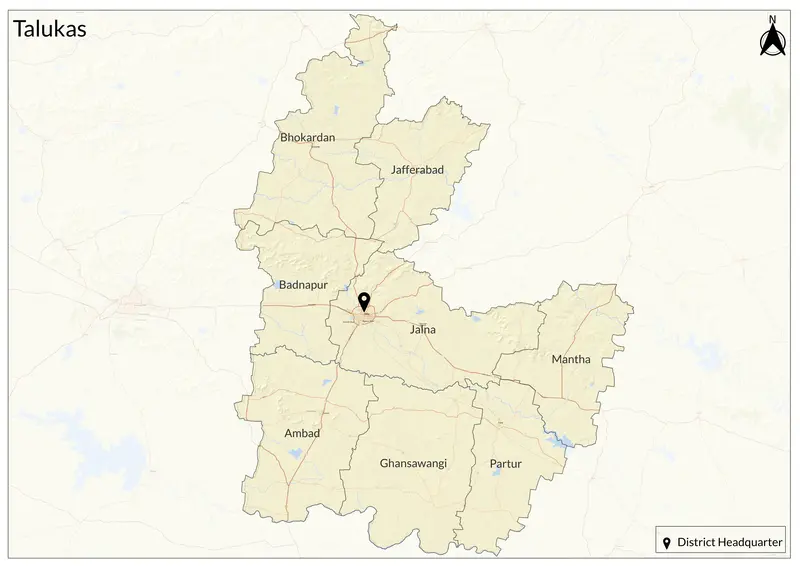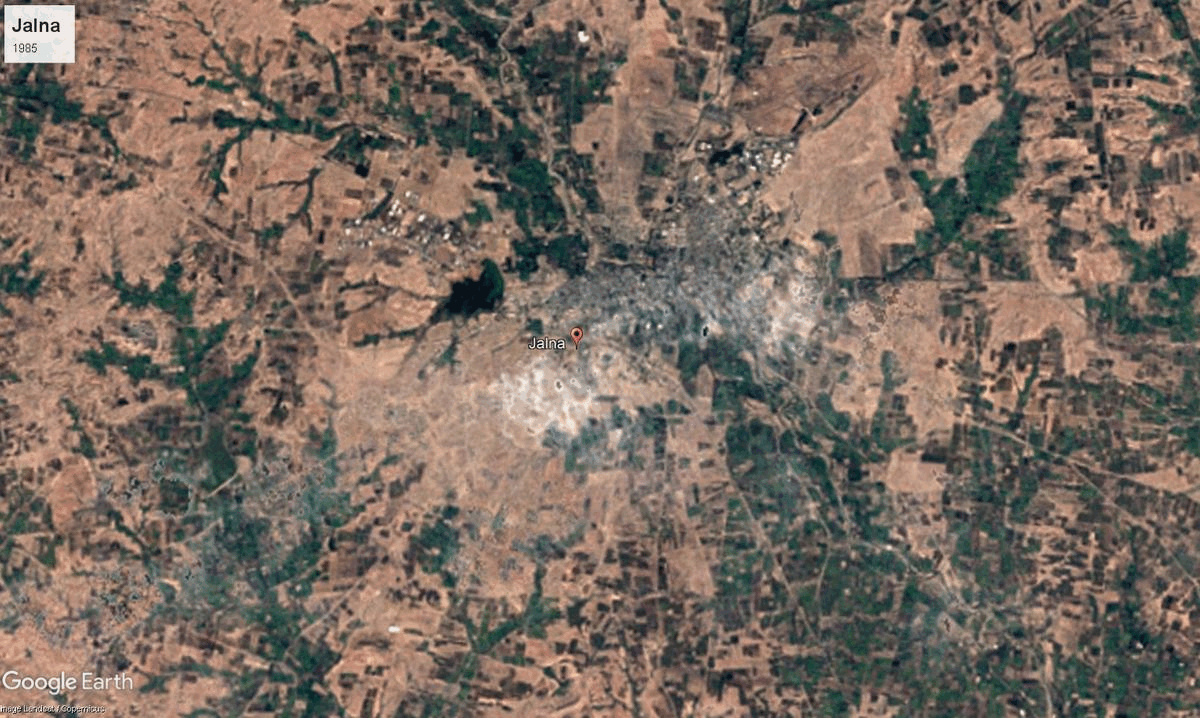Jalna

7,718 sq. km
~20.88 lakh (2019)
928 (2011)
~ ₹21,688 crore (2019)
~ ₹1.04 lakh (2019)
Jalna district, located in central Maharashtra’s Marathwada region, sits north of Aurangabad. "Jalna" word appears to have coined by a wealthy weaver in this place from its earlier name, Janakpur. A weaver is called 'julaha' sometimes, and it was named after this profession (in fact, even today, the district is an important handloom and powerloom centre in the state). Historically, Jalna saw Buddhist influence during Ashoka’s reign, and later, the district was part of the Satavahana heartland. It shifted hands from Chalukyas, Rashtrakutas, Western Chalukyas, and Yadavas, before Malik Kafur’s 14th-century conquest brought it under the Delhi Sultanate. Then, Jalna was governed by the Bahmani Sultanate and eventually the Ahmednagar Sultanate. The Mughals and Asaf Jah Nizams also ruled here. After brief Maratha dominance (from 1728), the district reverted to the Nizam’s Hyderabad State until India’s annexation in 1948. Jalna district was officially formed in 1981 from parts of Aurangabad and Parbhani.
Culturally, Jalna thrives on a mix of Marathi, Urdu, Hindi, and Lambadi influences, reflecting its centuries-old history as a trading and migration junction. The district is home to several temples, mosques, and local shrines, hosting vibrant fairs and religious events that bring together the region’s multi-ethnic communities. Jalna Fort, popularly known as Mastgad, was built in 1725 by Kabil Khan under the orders of Nizam-ul-Mulk Asaf Jah I. Another notable historical structure is the Kali Masjid, constructed in 1557 by Jamshid Khan during the Nizam Shahi era. The Matsyodari Devi Mandir in Ambad, dedicated to Durga, is an important religious site.
Geographically, Jalna is characterized by gently sloping terrain, bounded by the Ajanta and Satmala hills in the north. The Godavari River flows along its southern edge, while the Purna river and its tributaries (Dudhana, Kelana, Girija, Kundlika) crisscross the district, nourishing its fields and supporting settlements. The Kundlika forms the Ghanewadi Reservoir, supplying water to Jalna city. Its geographic position—on the north of Marathwada—gives it both agricultural and transport significance, connecting it to neighboring districts via road and rail.
Agriculture is the primary occupation in Jalna. Economically, the district is renowned for its agricultural output, especially the “Dagdi Jowar” variety, which was awarded a Geographical Indication (GI) tag in 2024, protecting the identity of its prized jowar. The district is also a major center for cotton, pulses, seeds, and steel production, and houses several rice mills, ginning factories, and metal industries. Innovative farming and agro-industrial activity have fueled local development, while traditional trade networks link Jalna to wider Maharashtra. Jalna is also known as the "Seed Capital of Maharashtra" due to its extensive hybrid seed industry.
